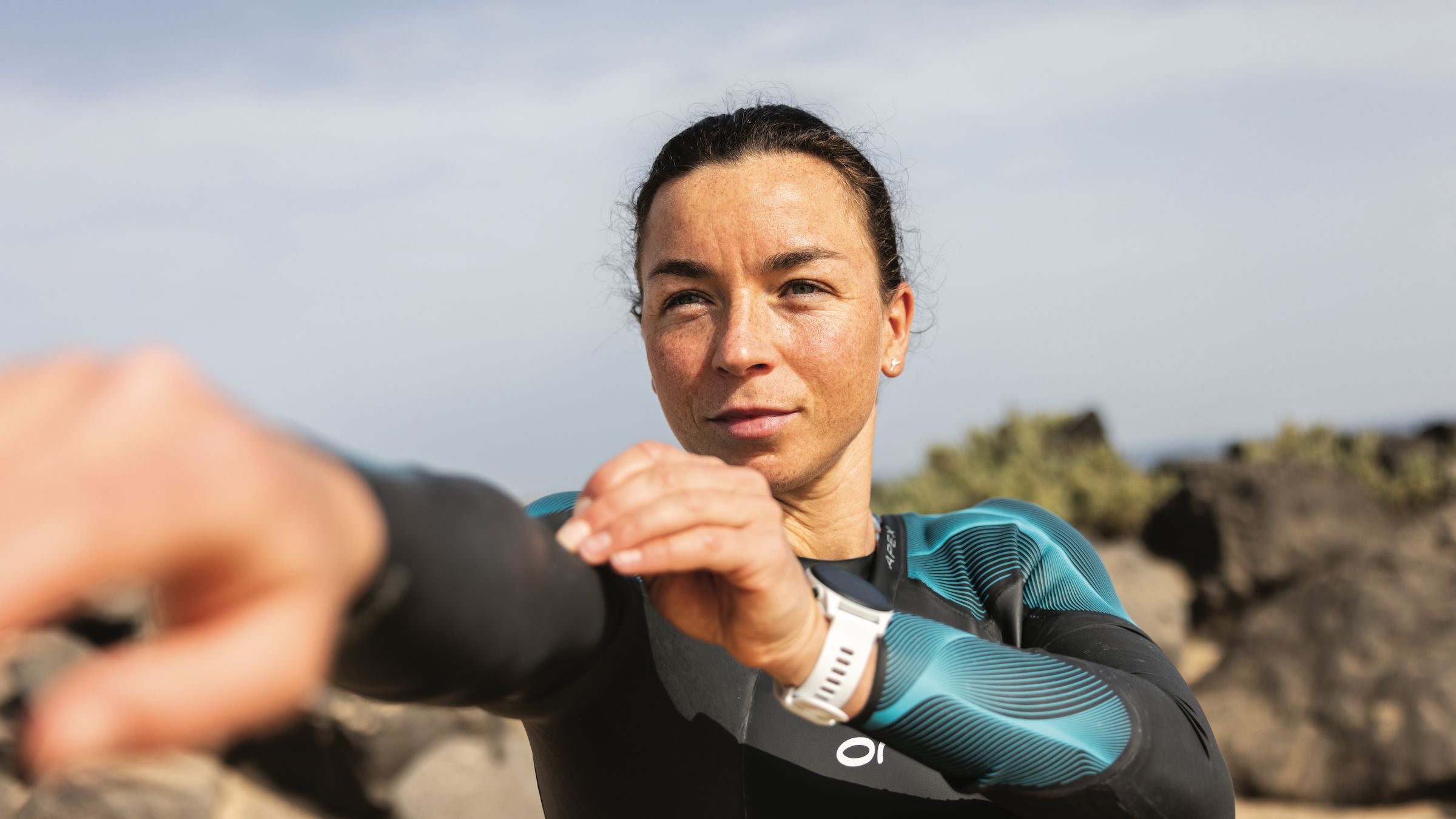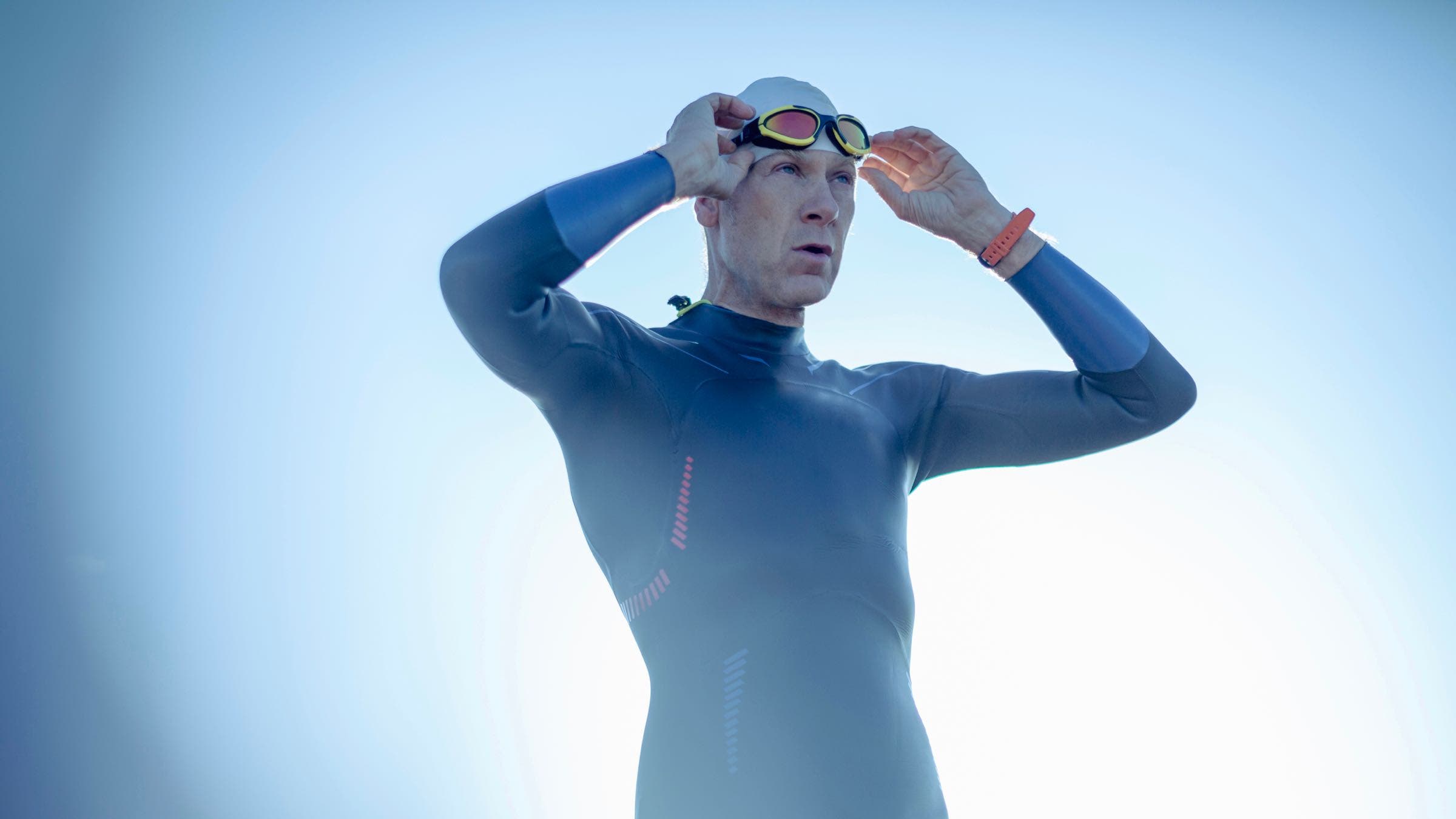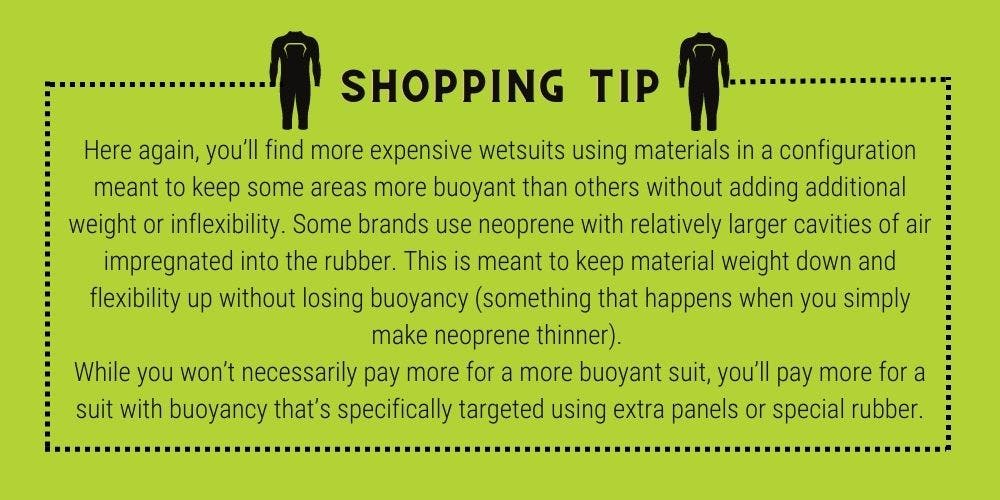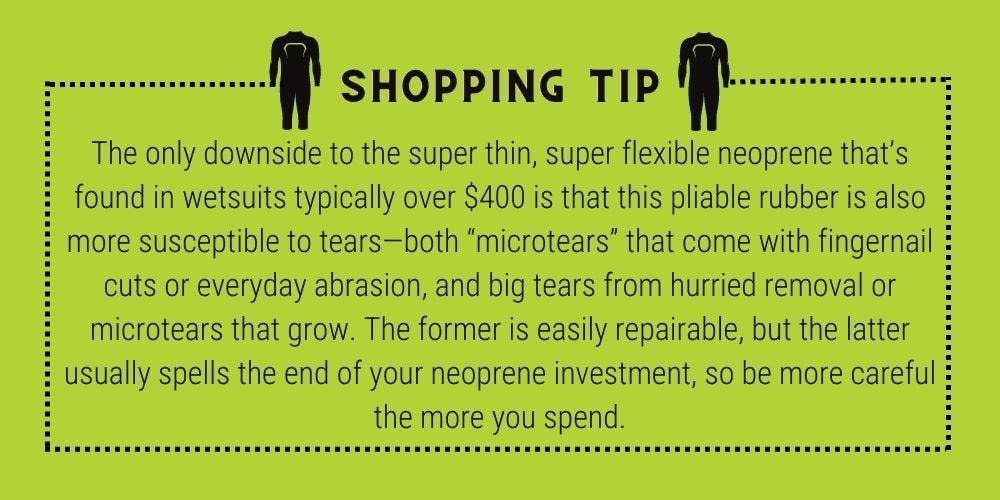What Matters (And What Doesn't) When Buying a Wetsuit

(Photo: Orca)
Way back in the day (yes, in the ancient times of the 1980s), triathletes had either no options for wetsuits, or they were stuck with a surf wetsuit that might keep them warm but was also nearly impossible to get off and incredibly inflexible. In the mid to late ‘80s, the first swim-specific wetsuits were designed, and since then triathletes have had increasingly better choices when it comes to the shape, features, price points, buoyancy profiles, thickness, and materials. Today we have wetsuits as cheap as a pair of running shoes, and we have wetsuits as expensive as a laptop. Let’s break down where you should start looking when it’s time to invest in some new rubber.
RELATED: Do Wetsuits Really Make You Faster? The Science Says…
What to look for in a triathlon wetsuit

The Fit
Much like a bike, nothing else matters if a wetsuit doesn’t fit you well. All of the fancy air-impregnated neoprene and structural taping and floatation roll bars won’t do you much good if the suit is filling with water (it’s too big) or it’s contorting you into an unnatural position and restricting your range of motion (it’s too small). Even if you get the right size for your height and weight, our bodies rarely fit into pre-constrained boxes, and as such, some suits will have a slimmer top, slimmer legs, or a combination of the two. While our wetsuit guide has general fit guidelines, the best thing to do is find a shop that’ll let you try on a few models before you buy. Or, you could find a brand (or two) with a good return policy, get a few models in your price range, try them on, and see which fits–then send back the rest. Just know, if you’re worried about waste and sustainability, those returns likely don’t go back on the shelf.

Buoyancy Profile
Sadly, (most) humans—and certainly most triathletes—aren’t necessarily built to swim. If you come from a running or cycling background, you might find your legs sink, acting like an anchor as you try to swim along in a taut manner. Similarly, if you’re a lifelong swimmer and your body position is hydrodynamically optimized (read: you swim flat in the water), you might find an overly buoyant wetsuit interferes with your already excellent position—sighting might be harder than it should be, for instance. The good news is that some wetsuit brands recognize this difference in style and muscular density. Many suits have extra buoyancy in the legs because so many triathletes find this to be a huge blessing to their technique—part of why many triathletes find themselves faster with a wetsuit than without. Here, be realistic about your body type and swimming style and experience to help match the buoyancy profile with what you need and what you don’t.

Warmth
One of the biggest misconceptions about triathlon wetsuits is that certain suits are substantially warmer than others. This is typically a result of primarily surf wetsuit knowledge. In surfing, you wear a 2/3mm thick suit in the spring/summer, a 3/4mm thick one in the fall, and a 4/5mm in the early winter, before getting into something like a drysuit. Triathlon wetsuits don’t even use that nomenclature—as most wetsuits cover a wide range of neoprene thicknesses ranging from 1mm to 5mm in different spots. While there are thermal tri wetsuits with some insulated lining material, the majority of non-thermal suits are roughly the same warmth. We have noted in our wetsuit buyer’s guide if any are substantially warmer than others, but you’re not typically shopping for a swimming wetsuit based on warmth. The best rule of thumb for water temperature is:
| WETSUIT GUIDE BY TEMPERATURE | |
| Under 50 degrees F | Don’t swim (or thermal, plus speciality gear for extremities) |
| 50-55 F | Thermal suit |
| 55 - 76 F (depending on race rules) | Full-sleeve wetsuit |
| 76 F & above | Sleeveless suit, speed suit, or no wetsuit |
Flexibility
This is where the price can start to go up, big time. One of the two biggest differences between an inexpensive wetsuit and one that costs more is the type and quality of neoprene used in its construction: Thinner, more flexible neoprene (that isn’t so delicate it’ll tear with daily use) is more expensive than thicker, inflexible rubber. And while some things like buoyancy and fit are swimmer-specific, no one wants a wetsuit that causes shoulder resistance and fatigue. Similarly, triathletes generally want more “suppleness” (which is basically flexibility) in the neck area to prevent chafing and water entry, as well as in the ankle and wrist area for easier removal in T1. Remember, this thing has to come off, fast!
RELATED: Ask A Gear Guru: How In The #$*& Do I Put On A Triathlon Wetsuit?

Ready to start shopping? Continue on to our guide to the best triathlon wetsuits, where we’ve hands-on rated and reviewed nine of the top tri wetsuits for men and women.